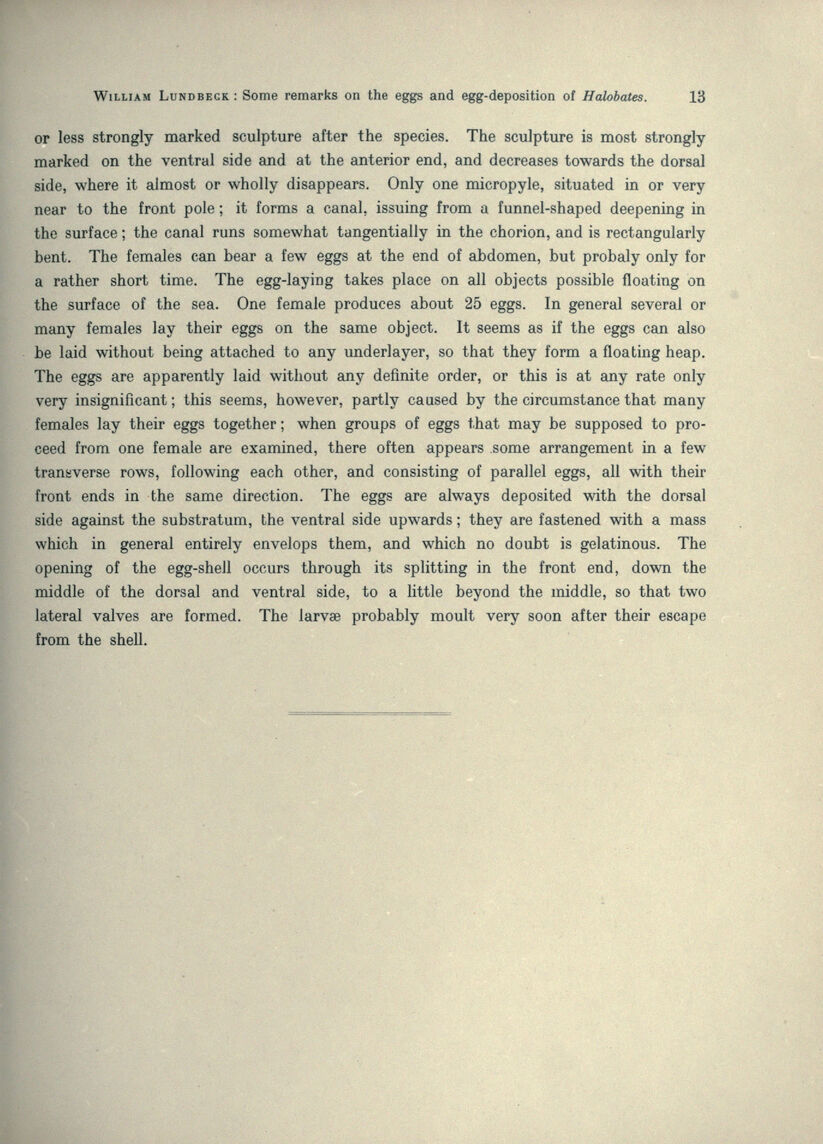
Full resolution (JPEG) - On this page / på denna sida - Some Remarks on the Eggs and Egg-deposition of Halobates

<< prev. page << föreg. sida << >> nästa sida >> next page >>
Below is the raw OCR text
from the above scanned image.
Do you see an error? Proofread the page now!
Här nedan syns maskintolkade texten från faksimilbilden ovan.
Ser du något fel? Korrekturläs sidan nu!
This page has been proofread at least once.
(diff)
(history)
Denna sida har korrekturlästs minst en gång.
(skillnad)
(historik)
or less strongly marked sculpture after the species. The sculpture is most strongly
marked on the ventral side and at the anterior end, and decreases towards the dorsal
side, where it almost or wholly disappears. Only one micropyle, situated in or very
near to the front pole; it forms a canal, issuing from a funnel-shaped deepening in
the surface; the canal runs somewhat tangentially in the chorion, and is rectangularly
bent, The females can bear a few eggs at the end of abdomen, but probaly only for
a rather short time. The egg-laying takes place on all objects possible floating on
the surface of the sea. One female produces about 25 eggs. In general several or
many females lay their eggs on the same object. It seems as if the eggs can also
be laid without being attached to any underlayer, so that they form a floating heap.
The eggs are apparently laid without any definite order, or this is at any rate only
very insignificant; this seems, however, partly caused by the circumstance that many
females lay their eggs together; when groups of eggs that may be supposed to
proceed from one female are examined, there often appears some arrangement in a few
transverse rows, following each other, and consisting of parallel eggs, all with their
front ends in the same direction. The eggs are always deposited with the dorsal
side against the substratum, the ventral side upwards; they are fastened with a mass
which in general entirely envelops them, and which no doubt is gelatinous. The
opening of the egg-shell occurs through its splitting in the front end, down the
middle of the dorsal and ventral side, to a little beyond the middle, so that two
lateral valves are formed. The larvæ probably moult very soon after their escape
from the shell.
<< prev. page << föreg. sida << >> nästa sida >> next page >>